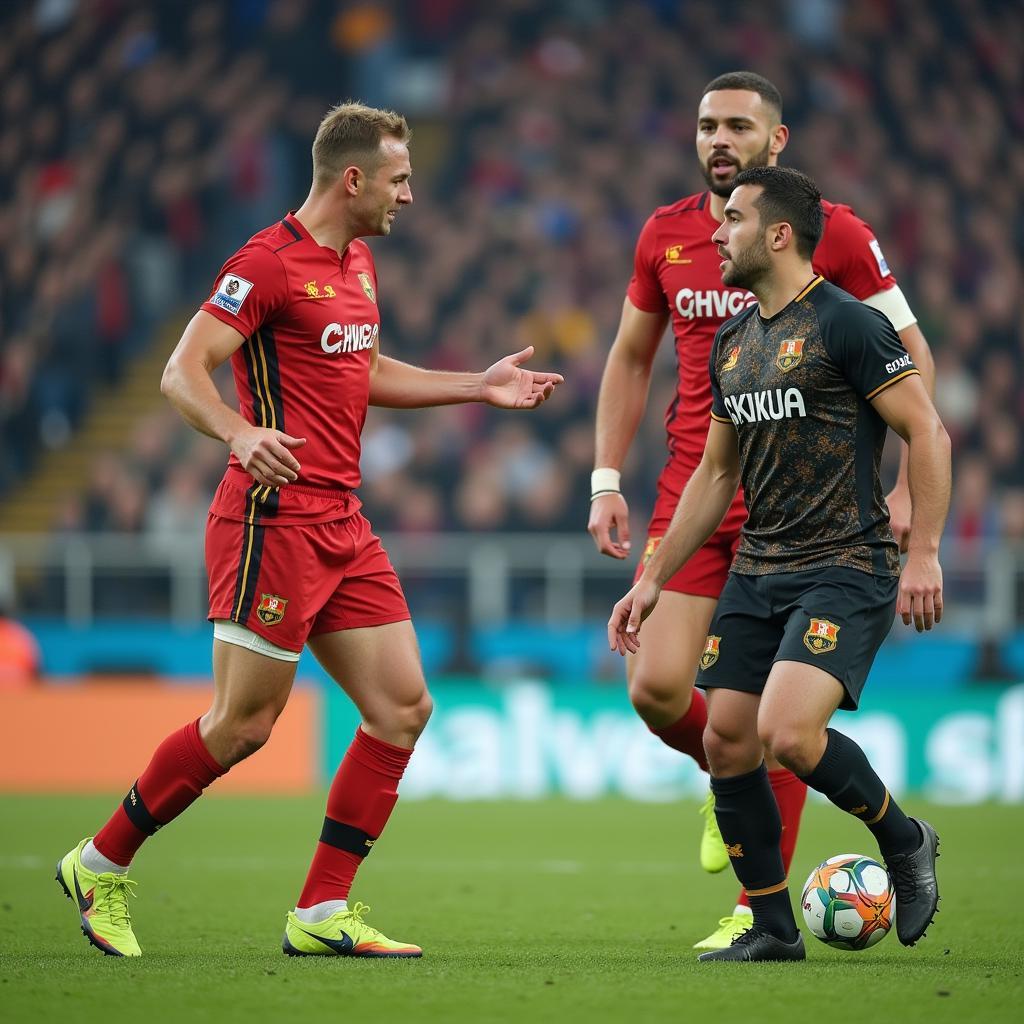The “Top Player, Bottom Doesn’t Listen” Phenomenon in Football
November 13, 2024The “top player, bottom doesn’t listen” phenomenon, a common issue in football, refers to situations where highly skilled players struggle to connect with less experienced teammates. This disconnect can manifest in various ways, hindering team cohesion and ultimately impacting performance. This article explores the dynamics of this phenomenon, its causes, and potential solutions.
Understanding the Disconnect: “Top Player, Bottom Doesn’t Listen”
This phrase encapsulates the frustration experienced when talented individuals attempt to elevate team performance but face resistance or a lack of understanding from less experienced players. It’s not necessarily about defiance, but rather a gap in understanding, communication, or shared vision. This gap can stem from several factors, impacting both the “top player” and the “bottom.”
Causes of the “Top Player, Bottom Doesn’t Listen” Dynamic
Several contributing factors can create this disconnect. Firstly, tactical understanding plays a crucial role. A seasoned player might see opportunities and make runs that less experienced teammates simply don’t anticipate, leading to missed passes and broken plays. Secondly, communication styles can create barriers. A “top player” might use concise, jargon-filled instructions that confuse newer players. Conversely, less experienced players might hesitate to communicate their needs or challenges. Thirdly, respect and trust, or lack thereof, influence team dynamics. Younger players may feel intimidated or resentful towards established stars, hindering open communication and collaboration. Finally, coaching style plays a vital role in shaping team dynamics. A coach who doesn’t emphasize communication and mutual respect can inadvertently exacerbate this disconnect.
 Top Player Frustration in Football
Top Player Frustration in Football
Bridging the Gap: Strategies for Improved Team Cohesion
Overcoming this challenge requires a multi-faceted approach. Clear communication is paramount. “Top players” need to adapt their language, providing clear, concise instructions and feedback. Conversely, younger players should be encouraged to ask questions and voice their concerns. Building trust and respect is essential. This can be achieved through team-building activities, open dialogue, and demonstrating mutual support both on and off the field. Furthermore, tactical education is crucial. Coaches should implement training sessions focused on improving tactical awareness and understanding across the entire team. This will help less experienced players anticipate the movements and decisions of their more skilled teammates.
The Role of Coaching in Addressing the Disconnect
Coaches bear a significant responsibility in fostering a positive and collaborative team environment. They must emphasize the importance of communication, respect, and shared responsibility. Implementing strategies that promote open dialogue and mutual understanding can significantly reduce the “top player, bottom doesn’t listen” dynamic.
My Personal Experience with this Phenomenon
Throughout my career, I’ve encountered situations where this dynamic has played out. Early on, I found myself frustrated when teammates didn’t anticipate my runs or understand my intentions. However, I learned the importance of adapting my communication style and patiently explaining my thought processes. This not only improved my relationships with teammates but also enhanced our collective performance.
Conclusion: Overcoming the “Top Player, Bottom Doesn’t Listen” Challenge
The “top player, bottom doesn’t listen” phenomenon can significantly hinder a team’s potential. However, by focusing on clear communication, building trust and respect, and emphasizing tactical education, teams can bridge this gap and unlock their collective strength. Addressing this challenge requires a conscious effort from all players, with coaches playing a crucial role in fostering a positive and collaborative environment. By working together, teams can overcome this obstacle and achieve greater success on the field.
FAQ
- What does “top player, bottom doesn’t listen” mean? It refers to a disconnect between highly skilled and less experienced players, leading to miscommunication and missed opportunities on the field.
- Why does this phenomenon occur? Several factors contribute, including differences in tactical understanding, communication styles, and levels of trust and respect.
- How can this issue be addressed? Clear communication, team-building activities, and tactical education are key strategies for bridging the gap.
- What role does coaching play? Coaches are crucial in fostering a positive team environment that emphasizes communication and mutual respect.
- How can “top players” improve communication? By adapting their language, providing clear instructions, and patiently explaining their thought processes.
- How can less experienced players contribute to the solution? By asking questions, voicing concerns, and actively listening to their more experienced teammates.
- What are the benefits of addressing this issue? Improved team cohesion, better performance, and a more positive team environment.
When you need assistance, please contact Phone Number: 0396443476, Email: [email protected] Or visit: 23 Tháng 3, Đắk Nia, Gia Nghĩa, Đắk Nông, Việt Nam. We have a 24/7 customer service team.